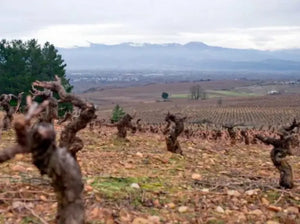Blog » Albarino
-
Heaven Sent Albariño: Nanclares y PrietoLegendary U.S. importer José Pastor has been the gateway to many new Spanish discoveries, including Envínate and Luis Rodriguez. Alberto Nanclares and Silvia Prieto in Rias Baixas marked a massive shift in my understanding of descriptors like "crystalline" and "acid-driven" regarding Albariño and the Spanish white wine category as a whole.Like Vincent Dauvissat's Chablis, an element of clay in the soil (mixed with decomposed granite) gives these wines a gorgeous texture that stands out from the rest of the pack. Nanclares y Prieto produces a powerful and saturating style of Albariño still founded upon fresh citrus and orchard fruits, with a salty, long finish. These have become my Spanish white obsession over the last few years, and I take every single bottle offered from José.
"Alberto Nanclares": The flagship wine of the estate. A blend of eight east-facing parcels on decomposed granite and sandy loam. Aged in used French oak barrels.Soverribas: Vines up to 100 years old from three west-facing parcels on sandy, granitic soils with clay deposits. Fermented and aged in a 2200L neutral French oak barrel.O Son Das Pisadas: 100% Mencia from the ‘Eira Padín’ parcel in Rias Baixas. Vines are trained high in the espaldera method. Soil is sandy loam over granitic bedrock.Minato da Rana: 100-year-old Mencía and Garnacha vines on granite in Ribeira Sacra, supplemented by 10% Palomino and Godello. -
Spanish Mic Drop: Raul Perez Atalier
It's hard to comprehend how one producer, like Raul Perez, can redefine the Spanish white wine category. His most monumental wine is Sketch, an Albariño sourced from a 0.5-hectare parcel of old vines in Rias Baixas, priced at $100-plus per bottle. It's worth its weight in gold, but upon release, rumors swirled that his other Albariño was going to be the proverbial mic drop moment for the variety.
Our go-to Atalier bottling, "A Cruz das Animas" comes from two parcels of Albariño vines in the Cambados area of the Salnés Valley, located in the southern portion of Spain's northwest tip. And today, we're adding "La Encrucijada" from Atalier's oldest and most sea-adjacent vines, which sees extended aging in barrel (About 14 months) on its fine lees before bottling. Raul's greatest influence is white Burgundy, and he takes every step possible to preserve Albariño's cut and delineation iwhile also pushing for maximum ripeness and flavor development.
The key steps are harvesting very late and then blocking malolactic fermentation, which allows for superb ripeness but eliminates the more viscous and creamy elements of Albariño that don't appeal to Raul. Aging is in older French foudre, which preserves tension and softens texture. Perez redefines what a mineral-driven Spanish white wine is capable of, showing the same depth and nuance I expect from Chablis and Côte de Beaune Chardonnay. Simply put, his Atalier over-delivers.
.svg?v=162776257677185172071724397232)




